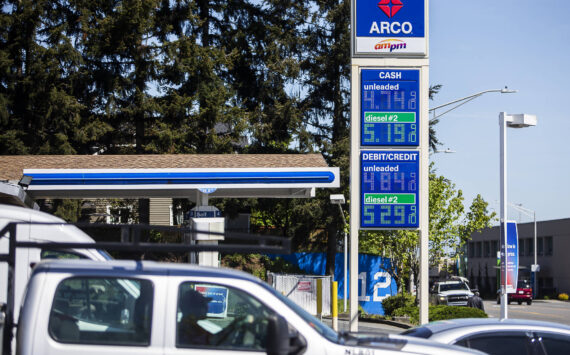By Morf Morford
Tacoma Daily Index
It was the best of times, it was the worst of times, it was the age of wisdom, it was the age of foolishness, it was the epoch of belief, it was the epoch of incredulity, it was the season of Light, it was the season of Darkness, it was the spring of hope, it was the winter of despair, we had everything before us, we had nothing before us, we were all going direct to Heaven, we were all going direct the other way – in short, the period was so far like the present period, that some of its noisiest authorities insisted on its being received, for good or for evil, in the superlative degree of comparison only. – Opening line, Tale of two cities, Charles Dickens
History rarely, if ever, actually repeats, but echoes and resonances occur on a regular basis.
Our era, as Dickens put it, is, in more ways than could be counted, the worst of times and the best of times.
Familiar reference points and ways of doing things seem to crumble before our eyes, and new distractions – mostly in the realm of technology – beguile us with their promise – and, for many, their intrusion and disruption of our daily lives and relationships.
And our economy, in a way few of us have ever seen, seems to be running full speed – in two directions at once.
Interest rates
Interest rates in 2022 are a perfect reflection of how our economy splits cleanly and bifurcates with dramatic advantages to some – and catastrophic – even lifelong impacts to others.
Interest rates act as a wedge, or even, as Archimedes might put it, a lever that forces each side far further than it was already going.
“Give me a lever long enough and a fulcrum on which to place it, and I shall move the world.” – Archimedes
A fair and just economic system would mitigate the excesses of the rich and the tragedies and difficulties of the poor. An unjust and corrupt economic system would allow, even legally encode injustice and exploitation.
The power of compounding interest is a powerful force – multiplying fortunes almost miraculously.
And fluctuating interest rates are known for disintegrating fortunes just as quickly.
Inflation
Inflation is just a fancy term that refers to things costing more than they did.
And, expected to cost more in the future.
No category is safe from ever-expanding pockets.
From real estate to fresh produce, everything costs more than it did.
And will cost more than it already does.
Those on the winning side of this inflation equation are either profiting from increasing prices, or bought early enough to gain a bit of a cushion against the more extreme effects.
Those on the losing side pay more and find themselves slipping even further into debt – or even more dependent on the ever-increasing interest rates of surreptitiously appearing credit cards.
As time goes by, more and more buy essentials, like groceries, on credit. Those groceries may be consumed, but the debt keeps growing.
Shortages
We in America never expected to see empty store shelves.
We might have believed in supply and demand, but our firmest belief was in supply.
Any given store would have what we want.
We might not like the price, but the product would always be there.
Shortages of food and other basics were the problem of those distant benighted nations. We in America would always have bulging shelves of every conceivable product. We took pride in fifty brands of toothpaste.
Or breads. Standard grocery stores features gluten-free, fat-free, even grain-free breads.
We have grown to expect our wildest whim to be met with ever more choices.
The toilet paper shortage of 2020 should have been a warning.
If something as basic as toilet paper could suddenly evaporate from our shelves, what, if anything was safe?
And, as we found out in the years since then, nothing was immune from the shortage contagion. Supply chain glitches, product recalls, hurricanes, pandemics and yes, even war disrupted our shopping routines and expectations far more than any of us could have imagined possible. From trucks to infant formula or fuel, shortages have become an everyday aspect of our lives.
Investments
Price volatility offers the most opportunity for profit – and loss. Buying at the lows and selling at the highs is every investors’s dream.
Are we in an investment bubble?
Or are any investment options (from gold to real estate to stocks to cryptocurrencies) under-valued?
You’ll see both verdicts on business pages.
Only time will tell of course, but one thing is certain in these crazy times; there will be some major winners profiting from inconceivable growth and expansion.
And many massive losers as the ground shifts from one pivot point to another.
Fortunes will be made and fortunes will be lost.
And our times will be not so different from previous economic tectonic shifts.
Just faster.
The rich and the poor
Every one of these trends and aspects of the economy confirms and consolidates – or, in some cases, reveals, who has the means to survive economic stress and turmoil. And who doesn’t.
Cracks turn into fractures and fractures become fissures. And fissures become chasms.
Stagflation was a term used to describe an economy similar to ours about a generation ago. Stagflation is where income is stagnant and prices increase and where, in effect, everyone is held hostage by an economy that seems to have lost its traditional benchmarks.
And yes, for those who don’t remember, it is as miserable as it sounds. But it too, does not last forever.
Calm and stable, even prosperous times also have their corollaries.
The true winners in any economy are those who make their way into the next turn of the wheel.
And perhaps Charles Dickens summed up how it best ends for any of us;
It is a far, far better thing that I do, than I have ever done; it is a far, far better rest I go to than I have ever known. – Closing line, Tale of two cities, Charles Dickens





